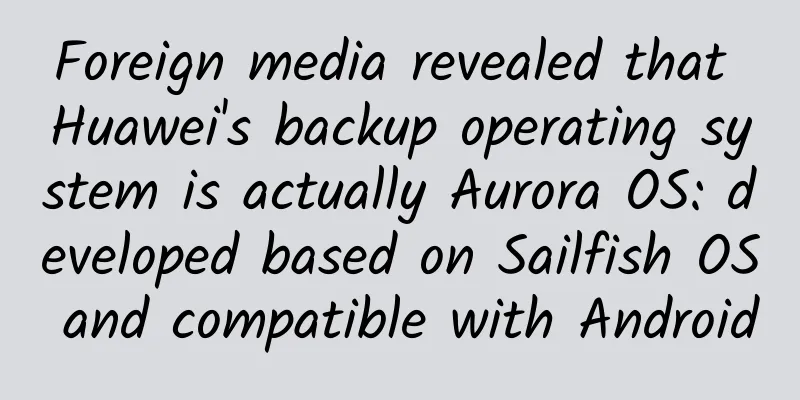The dream of "free hardware, paid services" will eventually be shattered

|
A few days ago, at the end of the article " Three Paradoxes of Giant Diversification: More Terrible than Positioning Failure ", I proposed three risks of diversification in the post-Internet era: free hardware and paid services, the value of ubiquitous Internet portals, and subversion of traditional industries. Due to the length of the article, I did not elaborate on it. This article wants to discuss the first risk: free hardware and paid services. Who is talking about "free hardware and charged service"? Currently, the main companies that are talking about this concept are Internet companies that have entered the hardware manufacturing industry, such as Xiaomi, LeTV, and 360. Lei Jun has always claimed that Xiaomi is an Internet company, which makes it difficult for other mobile phone companies to catch up. This is because Xiaomi phones can make profits by using the software, yellow pages and other services installed in MIUI to make up for the low-price strategy of hardware. LeTV launched letv, which also sells color TVs at low prices, but users must purchase a one-year LeTV TV card. It is also the only company that sells services directly. 360 once hoped to enter the mobile phone market with the help of "special supply phones", but in the end, the plan failed because mobile phone manufacturers did not cooperate with its low-price dumping of mobile phones, built-in software for advertising, and service revenue sharing model. At the end of 2014, Zhou Hongyi once again announced that he would "take AK47 to the south to make mobile phones", and 360 and Coolpad established a joint venture to enter the mobile phone industry. JD.com's Liu Qiangdong also said that refrigerators can be delivered for free after being connected to the Internet. The refrigerators can automatically sense which ingredients consumers are missing and directly notify JD.com to supply them. Other manufacturers that hope to adopt a similar free hardware approach include Tencent and Baidu. They have also entered the fields of WiFi, mobile phones, projectors, etc., but have not yet adopted a free hardware service charging model. No matter whose hardware is free, it is not completely free in the true sense. The hardware is sold at cost price, and then monetized by relying on user scale and Internet traffic, following the idea of Internet companies making products. Why do you dare to propose the "free hardware and paid service" model? So why do Internet companies dare to propose this new model? There are three main reasons: First, the standardization of hardware technology has lowered the threshold for entering this market. As smartphones and some smart devices have achieved "modularization" in technology, the turn-key model launched by MediaTek MTK has appeared on a large scale in the era when feature phones were popular. Today's Internet companies are like the "copycat mobile phone manufacturers" of the past, and can easily assemble products. At the same time, Internet companies have excellent financing capabilities and are at the forefront of financing, allowing them to use their capital advantages to find OEM manufacturers to produce products, which are of higher quality than those made by copycat workshops. As a result, another type of copycat hardware manufacturers was born. Their starting point, level, and formalization are much higher than those of the previous copycat manufacturers. Secondly, with the rise of social marketing, Internet companies have taken the lead. Traditional brand manufacturers need to use advertising and various ground marketing to support sales. For example, Samsung's annual marketing expenses are as high as 10 billion US dollars, and Apple's are as high as 9 billion US dollars. Internet companies have their own communication platforms, talents and users, which can effectively reduce these marketing costs and ultimately reflect them on product prices. This is also the inevitable result of disintermediation after the popularization of the Internet. The multi-layered interest chain from manufacturers to users has been shortened to a simple 1 or 2 layers. This is also the "user-centric" concept that Haier's Zhang Ruimin has been talking about recently. Thirdly, Internet companies have the ability to monetize traffic. Xiaomi, Baidu, Tencent, and 360 all have experience in selling traffic. They were companies that made money from services before, so their mature experience in providing services on the Internet platform can be directly transferred to networked hardware. Revenue of existing “free hardware and paid service” samples Currently, some companies are trying to provide “free hardware” services, so let’s take a look at their “service charge” ratio. First, Xiaomi's service revenue accounts for less than 1%. According to the data released by Xiaomi, in 2013, it sold 18.7 million mobile phones with a total revenue of 33 billion yuan, while the revenue from MIUI-related software, game downloads, and theme sales was about 100 million yuan, accounting for less than 1% of the total revenue. The data released in 2014 was 74.3 billion yuan, and the value-added service revenue was not announced. Apple's third quarter 2014 financial report showed that its revenue from iTunes, software and services was US$4.485 billion, accounting for 12% of the site's total revenue. Secondly, LeEco's TV business is in a loss-making state. LeEco released its 2014 full-year performance forecast, predicting revenue of 6.61 billion to 7.32 billion yuan and profit of 306 million to 332 million yuan in 2014. LeEco's TV sales volume was 1.5 million units, and the service fee for each TV was 900 yuan, with a total service fee income of 1.35 billion yuan. However, LeEco's net profit was only 300 million yuan, indicating that the value-added service income must have largely made up for the loss of its TV hardware sales. Judging from the current cases, Chinese companies that claim to make money from services at the expense of hardware prices have not made significant profits, but Apple's value-added service revenue accounts for as much as 12%. According to authoritative data, in the second quarter of 2014, Apple and Samsung accounted for 108% of the profits of global mobile phone companies; the latest data shows that in the fourth quarter of 2014, Apple made a record profit of 18 billion US dollars, and according to the latest report of investment company CanaccordGenuity, Apple made 93% of the profits in the smartphone industry in the fourth quarter of last year, and most of the remaining profits were obtained by Samsung, but Samsung's profit share has been greatly reduced. From the current perspective, several Chinese companies that claim to have “paid hardware and free services” are still unable to make substantial profits from their services. Will it be possible in the future? Does the dream of “free hardware and paid services” have a future? The reason why Internet companies want to achieve breakthroughs by relying on the "free hardware and paid services" model is that they see that the marginal cost of expanding Internet platforms is almost zero, but the marginal cost of hardware expansion is rising sharply. For example, after Tencent developed WeChat, the additional cost of continuing to optimize WeChat was almost zero, but the cost of selling a mobile phone is one unit, which is completely incomparable. But the basis of free hardware is exactly the same as that of the Internet platform, that is, it has a large number of users. In the book "Decoding Xiaomi - The Business Miracle of Internet Thinking", I compared Xiaomi mobile phone users with Tencent users. Xiaomi has about 100 million MIUI users, while WeChat users have exceeded 500 million. The cost of acquiring users is also very different. Therefore, for the "dream of free hardware and paid services", we have to think about the following: First, the service charging model for hardware is completely different from that of Internet platforms. The service charging model for hardware is best to charge for direct sales of services, such as Apple selling apps and the upcoming integration of its acquisition of Beats to launch streaming music services. However, China's user habits and environment mean that Chinese hardware companies can only rely on the old-fashioned sales of traffic, that is, the advertising model, to charge for services. Then, let's look at the revenue of Internet companies that sell advertisements. In 2013, Sina's advertising revenue was RMB 3 billion, Tencent's value-added service revenue declined, and its advertising revenue was about RMB 5 billion. 360's annual advertising revenue was also around RMB 3 billion. However, it is difficult to sell advertisements on mobile platforms, so relying solely on advertising revenue cannot support the revenue of hardware companies. Secondly, users of low-end hardware devices cannot contribute to significant value-added service revenue. In 2014, Xiaomi sold more than 60 million mobile phones, and the proportion of low-end Redmi phones has further increased. Many users of Redmi phones are in second-, third-, fourth- and fifth-tier cities. On the one hand, they are not active Internet users, and on the other hand, they are not the main contributors to value-added service revenue. A Redmi phone that costs 600 yuan only has a net profit of 50 yuan, which means that if you are not careful, you will lose money, so it is a huge risk to enter the low-end market. Thirdly, R&D investment and patent costs have not been calculated. According to public financial reports, Intel invested $10.6 billion in R&D in 2013, accounting for 20.1% of its revenue; Samsung invested $13.4 billion in R&D, and Apple invested less at $3.4 billion. After entering the hardware industry, only huge R&D investment can ensure continuous product innovation. In "Decoding Xiaomi - A Business Miracle Under Internet Thinking", I talked about "model innovation is only the first step in enterprise development". At present, the investment in R&D of several so-called hardware free model companies in China can be ignored. This means that the products cannot continue to be innovative and will encounter more copyright lawsuits. In February 2015, China's National Development and Reform Commission issued a fine of RMB 6.088 billion to Qualcomm. This means that Chinese communication companies with patents will be able to demand patent licensing fees from mobile phone companies such as Xiaomi, and Qualcomm's protection umbrella will no longer work. At the same time, in the international market, they will continue to face patent fees from giants such as Ericsson and Nokia. These mobile phone companies can no longer gain more market share in the Chinese mobile phone market where the demographic dividend has almost disappeared, and they will inevitably go overseas. Patent fees are the tuition fees they must pay. This means that companies like Xiaomi, which currently has only 6 billion yuan in net profit, have no more money to invest in research and development, and will have to continue to pay high patent fees and get entangled in more patent lawsuits. If the skin is gone, where will the hair be attached? Obviously, only by constantly innovating hardware can we continue to gain users, but without R&D investment, it is difficult to ensure the innovation of hardware. Some companies want to enter the automotive field, but they don’t know that the automotive field faces greater capital investment and patent barriers. Data shows that Volkswagen’s R&D expenditure in 2013 was $13.5 billion, accounting for 5.2% of its revenue; Japan’s Toyota Motor spent $9.1 billion on R&D in 2013, accounting for 3.5% of its revenue. Obviously, the simple advertising revenue of several billion yuan from a pure Internet company cannot support the huge R&D investment of a hardware company. It is just a drop in the bucket. Only stable profits from hardware sales can provide funds for investment in hardware R&D. This is a virtuous circle. Therefore, I have come to the conclusion that the "dream of free hardware and paid services" is currently just an illusion, or a "story" told by some Internet companies to the capital market, and everything will return to its essence. Only the power of returning to its essence can last, otherwise the bubble will eventually burst. As a winner of Toutiao's Qingyun Plan and Baijiahao's Bai+ Plan, the 2019 Baidu Digital Author of the Year, the Baijiahao's Most Popular Author in the Technology Field, the 2019 Sogou Technology and Culture Author, and the 2021 Baijiahao Quarterly Influential Creator, he has won many awards, including the 2013 Sohu Best Industry Media Person, the 2015 China New Media Entrepreneurship Competition Beijing Third Place, the 2015 Guangmang Experience Award, the 2015 China New Media Entrepreneurship Competition Finals Third Place, and the 2018 Baidu Dynamic Annual Powerful Celebrity. |
<<: How Weibo red envelopes replicated the magic of the Ice Bucket Challenge
>>: Watch Mango sing the heavenly music ZIVOO box defines a new scene of smart home entertainment
Recommend
How to attract more WeChat friends in private domains
Whether you open a Taobao store, do Douyin, write...
How much does it cost to develop a gaming device applet in Siping?
There is no doubt that the topic of mini programs...
Baidu SEM upgrade: conversion URL analysis, cases + steps + precautions! Receive~
Important notice: Baidu upgrades conversion URL p...
Uncovering the gems of our table: the nutritious and versatile legume family
Legumes such as soybeans, mung beans, broad beans...
This more than 100-meter-deep ice cave can make the sun "dance" and also hides geological "codes"
Author: Duan Yuechu and Huang Xianghong Image fro...
NIO's all-electric supercar makes its debut and reaches 100 km/h in 3 seconds!
'NIO's first supercar preview' NEXTEV...
Weibo Super Fans Practical Tutorial (30-hour video course)
Chapter 1: Introduction to Weibo Fantong Basics 1...
Let’s breathe in the forest and explore the natural treasures of Gaoligong Mountain
Get to know Gaoligong Mountain Gaoligong Mountain...
Webb telescope discovers mysterious galaxies that shouldn't exist
In February 2023, Nature magazine announced an im...
Complete record of the strong typhoon "Sura", how did "Guanhai No. 1" do it
On September 2, 2023, Typhoon No. 9 "Sura&qu...
What kind of subway copywriting is suitable for financial products?
Subway advertising is very popular this year, wit...
How did the little cricket change from a "cricket" to a "food"?
Crickets, this tiny insect, have been closely con...
Accenture: Survey shows companies are reluctant to spend money on AI training for employees
Most corporate executives expect artificial intel...
New ways to play with WeChat Mini Programs in the wedding industry
The wedding industry is becoming more and more po...
Weekly Science and Technology Award|Promising Photocatalytic Materials
In 1972, "Nature" published a paper pro...









